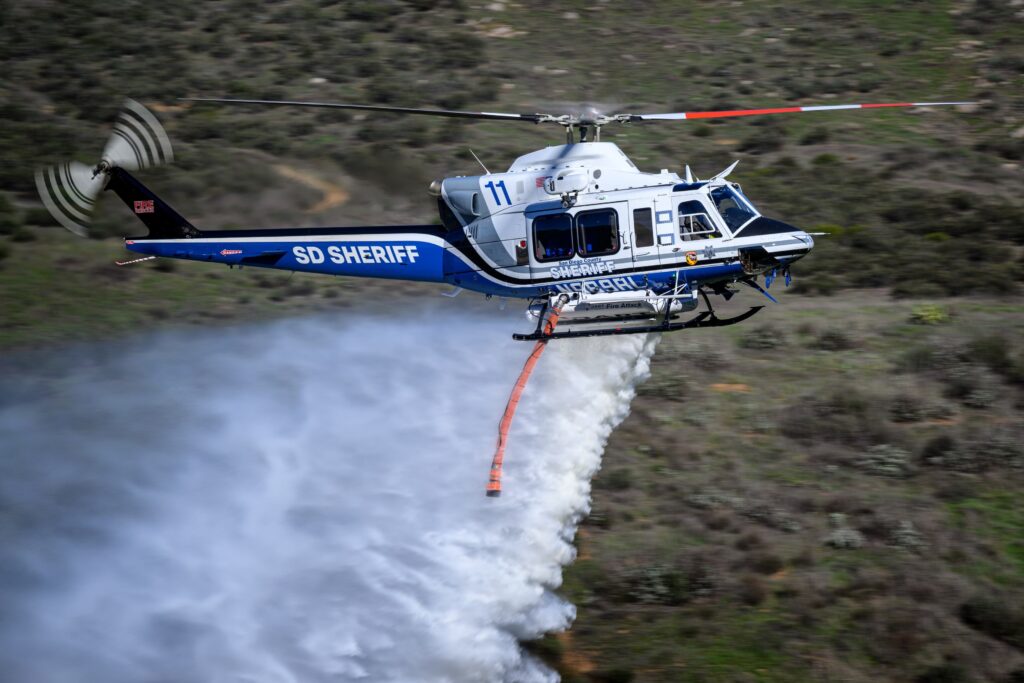The force is supported by a fourth helicopter, a Sikorsky S-76, equipped with a suite of thermal and HD cameras as well as mapping software for accurate detection and reporting of a fire’s perimeter and hotspots.

The use of helicopters in fire suppression and management.
The force is supported by a fourth helicopter, a Sikorsky S-76, equipped with a suite of thermal and HD cameras as well as mapping software for accurate detection and reporting of a fire’s perimeter and hotspots.

The CBC reported that a fire pilot with no passengers went down Friday in a Bell B212 near Fort Good Hope, Northwest Territories. Fire information officer Mike Westwick said the Royal Canadian Mounted Police (RCMP) and the Transportation Board of Canada (TSB) are responding to the incident.
The Canadian Press reported Tuesday evening that Great Slave Helicopters (GSH) said pilot Tom Frith died while fighting 20,000-acre fire near the Fort Good Hope community, about 800 km northwest of Yellowknife.
The company expressed condolences to Frith’s family. “He was a beacon of light,” GSH said. “He was beloved by all who had the privilege of knowing him. Our heartfelt condolences to Tom’s wife, children, parents, brothers and all extended family and friends in Yellowknife and in Australia.”
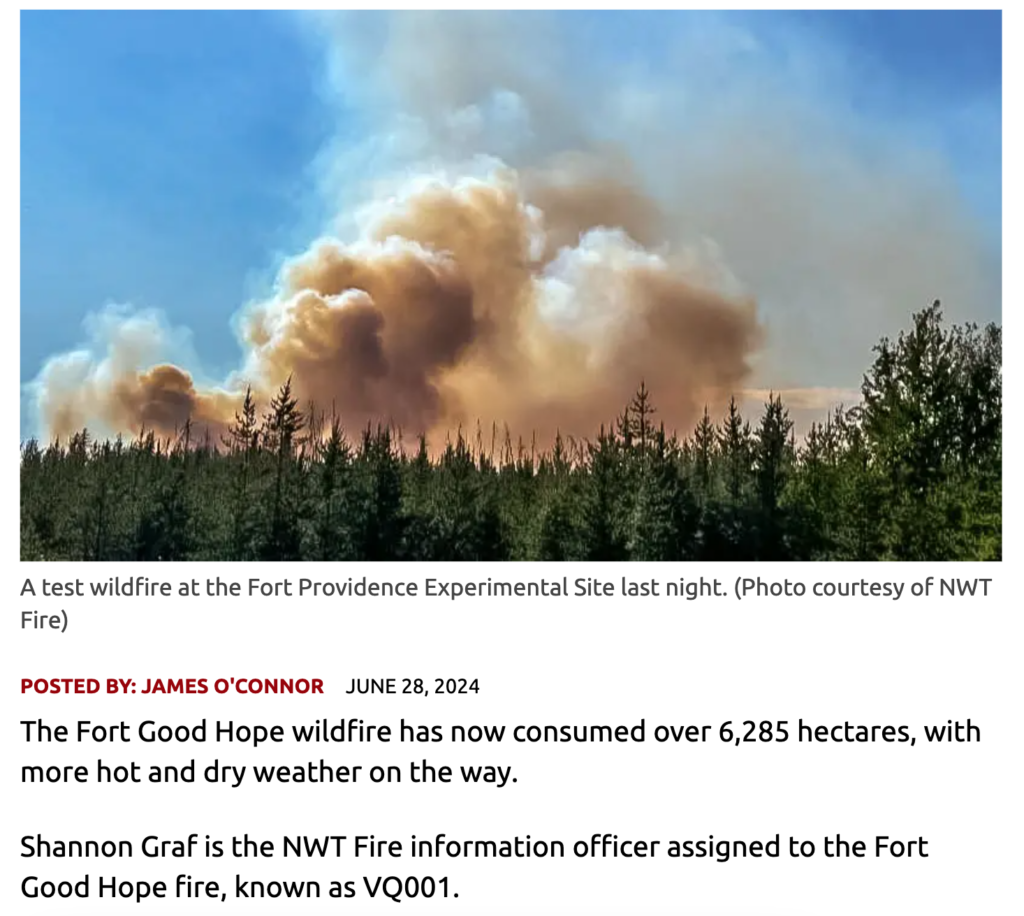
The TSB said it will activate a an investigative team; Great Slave Helicopters (GSH), and CKLB Radio reported that there were no passengers besides Frith, the pilot in the helicopter. Fort Good Hope Chief Collin Pierrot related it was a very difficult weekend for the community.

It was about 2 p.m. Friday when the RCMP received its first report of the accident, and before the end of the day the TSB was involved in the B212 investigation.
Pierrot said he got the news of a the helicopter crash while he was in a fire management meeting. The incident happened at the Fort Good Hope airport and involved only the Bell B212. The TSB investigators accessed the crash site on Sunday and are now collecting data and interviews.
Fort Good Hope has been under an evacuation order since June 15 as a fire burns at the edge of town.
Both of these spectacular shots were named “photo of the week” by the editor of Vertical Magazine. The only information or credits available is the caption here below each photo.

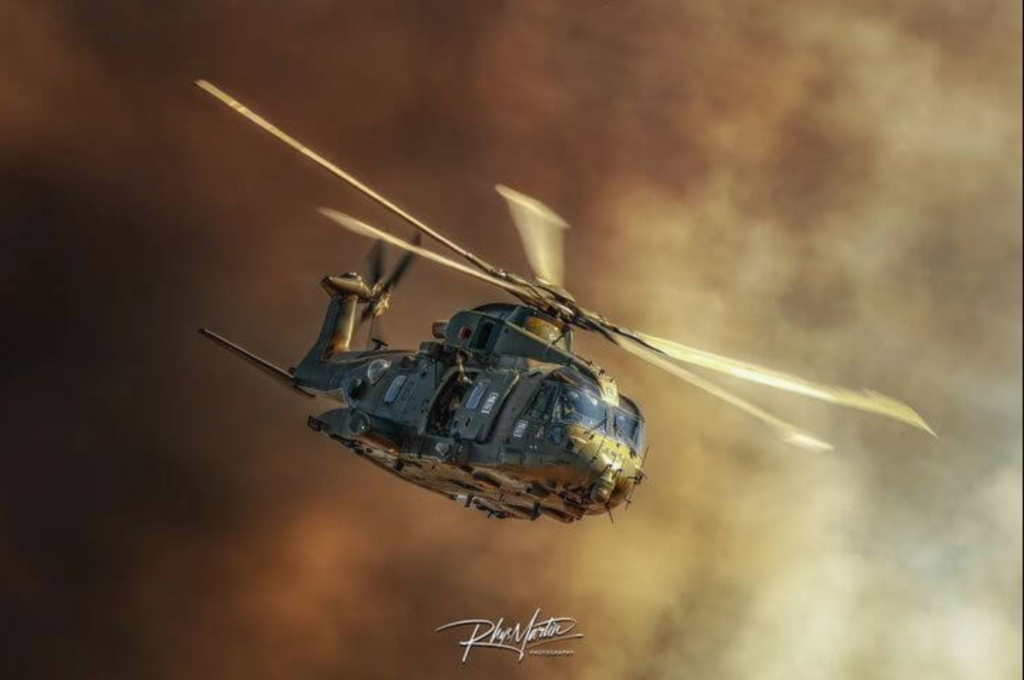
If you know the location or the name of the fire or the pilot, please use the “Contact Us” link at the top of the page — thanks!
Vertical Magazine has an outstanding “Photo of the Week” archives [HERE].
Australia is expanding its aerial firefighting fleet to include multi-use aircraft to respond not just to fires but also to natural disasters such as floods and major storms.
abc.net.au reported that longer and overlapping fire seasons are increasing pressure on the country’s firefighting fleet. The new federal budget includes an extra $35 million to source more multi-use aircraft, while a national audit is underway to ensure Australia has the capacity to meet building demand.
National Emergency Management Authority (NEMA) deputy coordinator general Joe Buffone said recent fire seasons illustrated the demand for more versatile aircraft.
“The key focus is to broaden the fleet so that it’s multi-use,” said Buffone. “This means aircraft will be able to be changed around so they can do evacuation, resupply, support remote communities, and help other emergencies way beyond just fire.”
NEMA reports that the Australian government will ensure that the country is better prepared by funding more aircraft to respond to fires, floods, and other severe weather events.
 Through the 2024-25 budget, the government will provide an additional $35 million over the next two years to the National Aerial Firefighting Centre (NAFC), for delivery of national, state and territory aircraft for fire and emergency services. This investment will provide a range of aerial assets, from specific firefighting aircraft to a mix of fixed-wing and rotary multi-use aircraft, boosting protection for communities as they face more intense, frequent, and concurrent disasters.
Through the 2024-25 budget, the government will provide an additional $35 million over the next two years to the National Aerial Firefighting Centre (NAFC), for delivery of national, state and territory aircraft for fire and emergency services. This investment will provide a range of aerial assets, from specific firefighting aircraft to a mix of fixed-wing and rotary multi-use aircraft, boosting protection for communities as they face more intense, frequent, and concurrent disasters.

Australian Flying reported last month that Aerial Application Association of Australia (AAAA) CEO Matt Harper welcomed the news that the government will spend $35 million through NAFC in support of aerial firefighting. The funding will help establish a sovereign aerial capability, as recommended by the Royal Commission into National Natural Disaster Arrangements, and it’s expected to ease pressure on military personnel and firefighting aircraft.

Harper said AAAA members invest heavily in their helicopters and SEATs, and they employ and train pilots, ground support, and mechanics. He added that because Australian firefighting expertise is internationally recognized, many of their members are headed to the northern hemisphere for the summer fire season. “Any consideration of future capability will need to balance speed and accuracy with cost and sustainability,” said Harper, “and we look forward to continuing to work with NAFC to demonstrate the vital role of Australian owned, crewed, registered, and maintained aircraft.”
Murray Watt, Minister for Emergency Management, said the increased funding boosts the government’s total contribution to national aerial capability to approximately $48 million a year.
As of March 2024 the fleet comprises 162 aircraft, including:
The fleet is supplemented by additional state-owned and state-contracted aircraft hired for peak demand periods. In total more than 500 aircraft, provided by over 150 operators, are available for firefighting across Australia.
“With this investment, we are not only increasing the number of aircraft available,” said Minister Watt, “but also broadening the type of aircraft so they can be used for different activities such as heavy lift, transportation and evacuations, and resupply operations.” He added that international requests for crewed aircraft are likely to increase as fire seasons in the northern hemisphere expand — enough that their season and the Australian fire season are overlapping now in higher-risk climate and extreme weather.
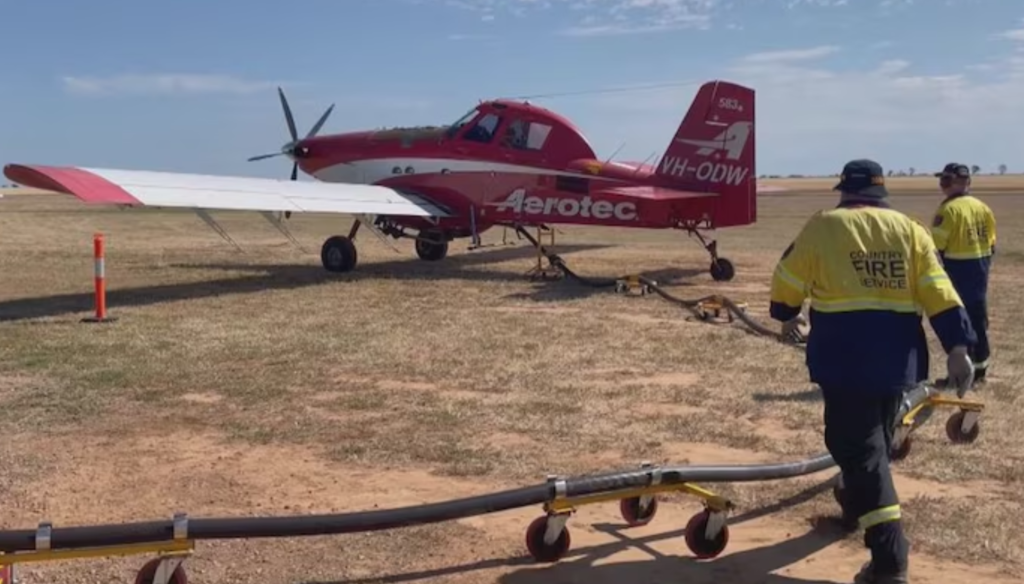
Buffone said the investment should reduce the need for the Australian Defence Force to step in during disasters. “There are some pressures on the system,” he explained. “We’ve got the northern hemisphere that quite often overlaps with the southern hemisphere season, so there’s more demand on aircraft. We’re trying to make sure we can actually have aircraft for aerial firefighting and for other emergencies.”
Most but not all of the aircraft contracted under NAFC are Australian-owned and registered, including several large airtankers, 15 large helicopters that can carry up to 11,000 litres (~3000 gallons), along with a mix of smaller rotary-wing aircraft.

Country Fire Service state aviation operations manager Nik Stanley said South Australia deployed its largest-ever firefighting fleet last summer.
“We had 31 aircraft for this season and we have that number for the next four seasons to come,” he said. “We are continuously evaluating our fleet, every year … looking at the capabilities that we have available, are they still suitable for us moving forward.”
In northern California tomorrow, PG&E and Cal Fire / Butte County Fire will request from the county Board of Supervisors authorization for the use of a contract firefighting helicopter. PG&E has an existing contract with PJ Helicopters out of Red Bluff, which would provide the aircraft to PG&E and the county.
KRCR-TV spoke with Cal Fire Captain Dan Collins about the request to the board, and he said firefighting aircraft are extremely important. “They can get there before ground resources and start dropping either water or fire retardant. To provide more fire equipment to the county is nothing but beneficial to everyone.”
Butte County Fire covers fire protection within the unincorporated areas of Butte County, the City of Oroville, the Town of Paradise, and the cities of Gridley and Biggs. Collins said the Butte County Fire Department would maintain operational control of the helicopter and provide dispatch services, along with coordinating requests from other agencies.
Collins also explained that the contract would be a collaboration between Butte Fire and PG&E — so the county would not have to fund anything. If approved, the new helicopter would be stationed at the Chico Airport starting in July.
PJ HELICOPTERS: The history of the company dates back to the early days of flight; as the great-nephew of aviation pioneer Samuel Langley, Phil Gunsauls began operating a single fixed-wing cropduster in 1968. A few years later, he decided to pursue his passion for rotorcraft. Originally using his first initial and his wife’s middle initial, “PJ’s Helicopter” started operations in 1970, and agricultural work eventually transitioned to firefighting.
Ryan Grothe captured for us several terrific photos of a San Diego County wildland drill between April 30 and May 2 in Chula Vista. Several fire and law enforcement agencies participated and training included shelter deployments, structure protection, wildland hose lays, and radio communications.
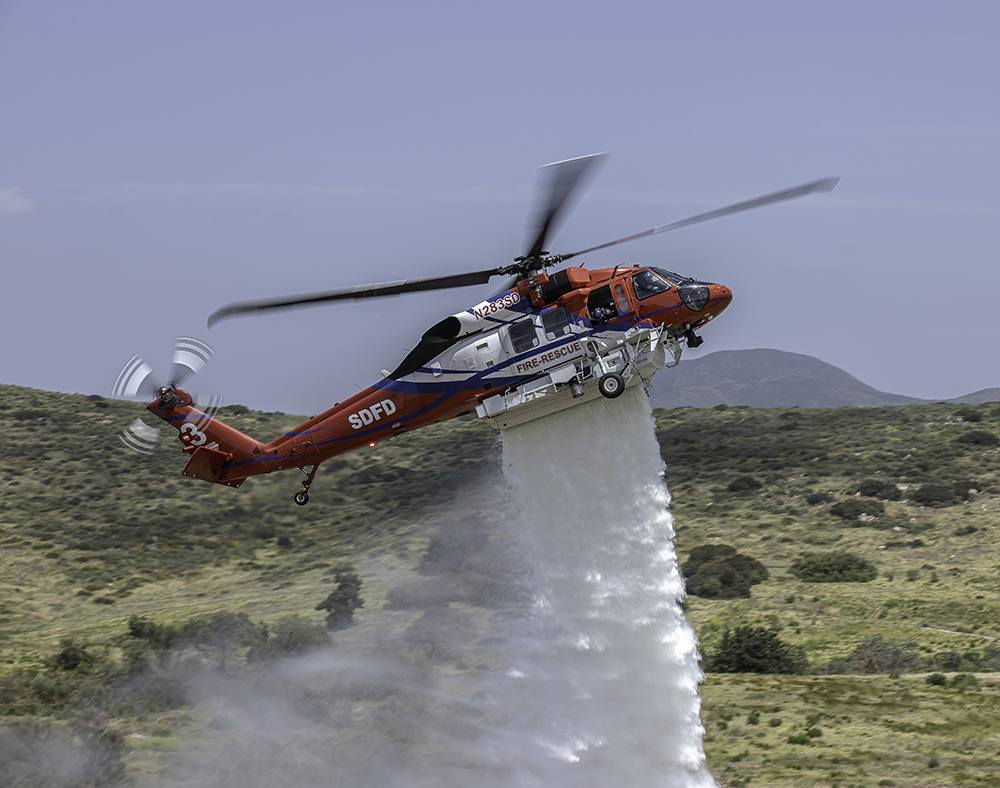
A San Diego Fire-Rescue helicopter made numerous water drops, along with a few simulated hoist rescues.
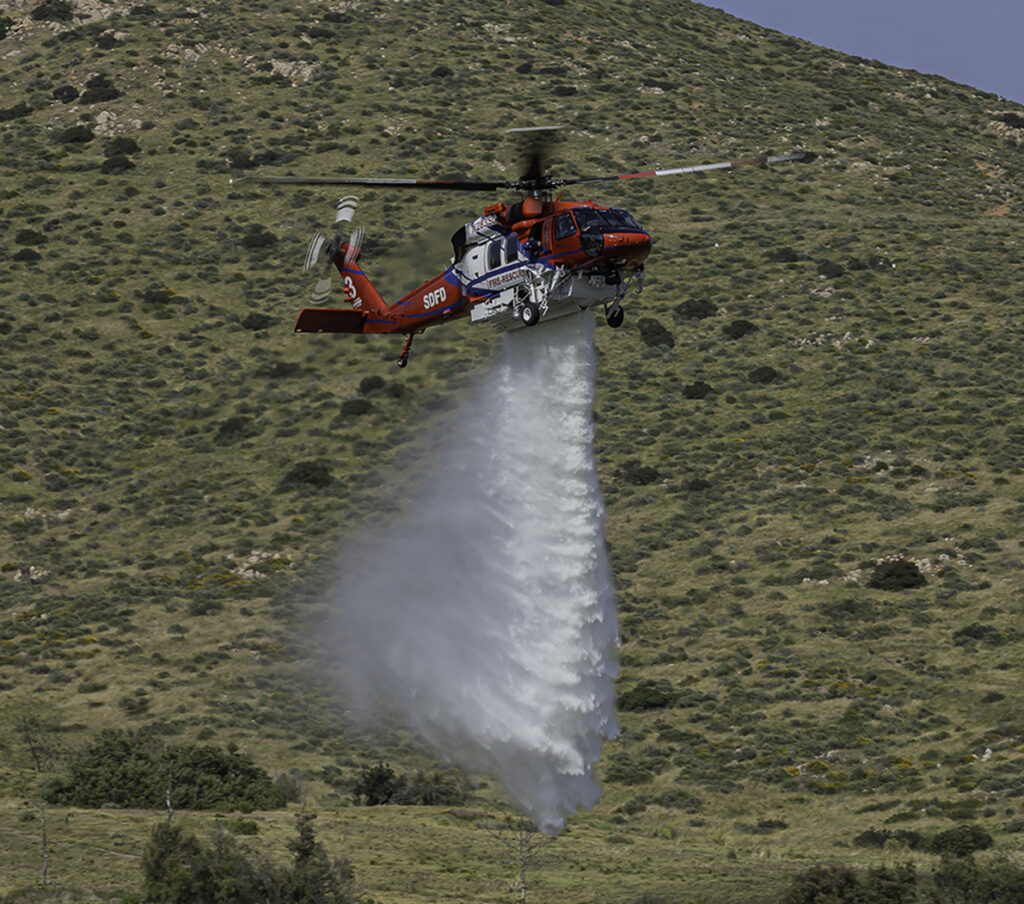
This event is held annually;. San Diego Fire Rescue operates a Sikorsky 70i Firehawk and they have recently purchased a Bell 412 EPX, expected to be delivered sometime toward the end of this year. Once it arrives, the new Bell will go to Hangar One at Palomar Airport for installation of avionics.

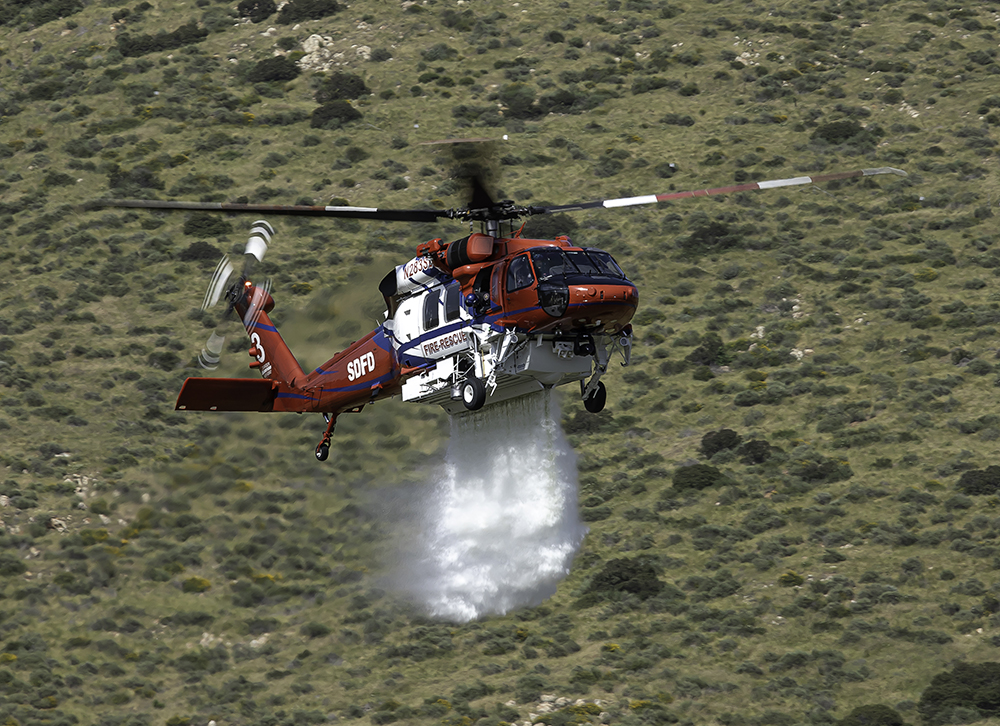
MANY THANKS for the terrific photos, Ryan!
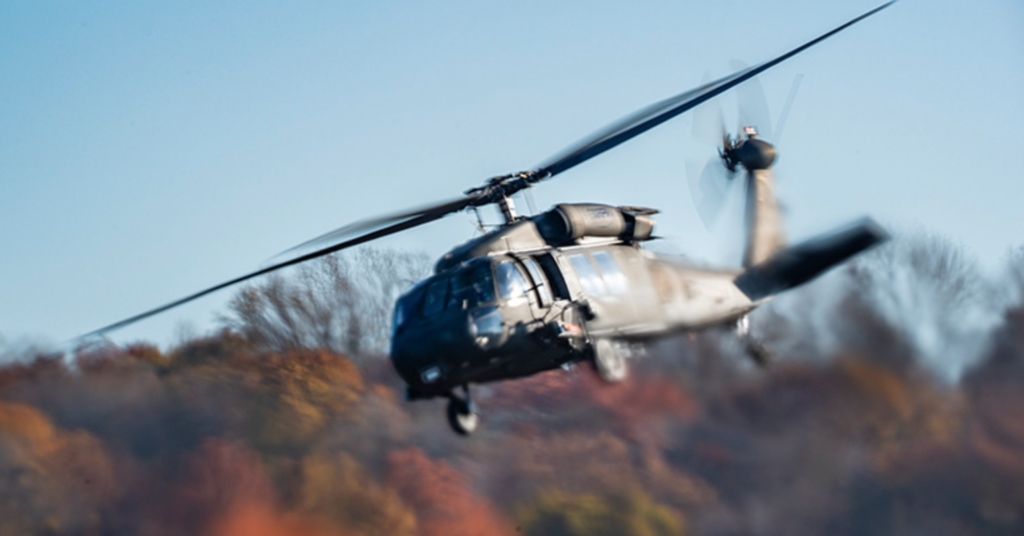
Sikorsky’s “Optionally Piloted” Black Hawk helicopter equipped with MATRIX and Rain autonomy systems during fire localization and targeting demos at Sikorsky HQ in Stratford, Connecticut.
Photo couresy of RAIN.aero
Rain.aero, a developer of aerial “wildfire containment technology” along with Sikorsky, have been for some time now researching wildfire suppression autonomous response possibilities. The companies completed test flights over a year ago with an “autonomous helicopter” that can carry and drop water onto wildfires in early stages of initial attack.
Rain — and Sikorsky — demonstrate early detection and fast response to wildfires, with an autonomous Black Hawk helicopter. The two companies have completed flight tests demonstrating how a helicopter flying with Sikorsky MATRIX and Rain’s “Wildfire Mission Autonomy System” could be quickly launched for initial attack.
The flight demonstration was at Sikorsky headquarters in Stratford, Connecticut, with the “Optionally Piloted Black Hawk helicopter” flying in autonomous mode with Sikorsky safety pilots on board.

“In 2023, in collaboration with Sikorsky, we set out to prove that we could receive an alert about a possible wildfire, send commands to launch and fly an autonomous helicopter capable of moving a large amount of suppressant to a fire’s location, and then command the helicopter to accurately drop water onto the fire,” said Rain CEO Maxwell Brodie. “We are very pleased with the results that successfully demonstrate autonomous early detection and rapid response.”
What do you think about these developments? Are you a helicopter pilot, or helitack, or hotshot or other ground crew member, or lead plane pilot or ATGS ?
I don’t know enough about the air show environment to have a first-hand opinion on pilot-free helicopters in any role on any fire. I first off can’t imagine where the pilot-free RC helicopters might even be sited (on public land? Large ranches checkerboarded with BLM 40s? Western states private timber holdings? federal or state agency land? Wilderness areas?) and how vandalism possibilities likelihoods (let alone pilot-skill vandals or cyberhacked outside operators) for pre-positioned rotorcraft of any kind (let alone a Sikorsky) might be mitigated or prevented or acted upon …
The San Diego County Sheriff’s Department and the San Bernardino County Sheriff’s Department this week acquired Bell 412EPX helicopters, adding to their airborne resources for emergency response. Three SUBARU Bell 412EPX helicopters were delivered, two to San Bernardino County and one to San Diego.
The Bell 412EPX has an internal weight of 12,200 lbs., external weight of 13,000 lbs., and the ability to carry 5,000 lbs. with its cargo hook.
In San Diego, the Sheriff’s aviation unit, Aerial Support to Regional Enforcement Agencies (ASTREA), completes nearly 6,000 public safety missions each year with its all-Bell fleet of emergency response helicopters, including four Bell 407GXis, three Bell 205s, and its newest addition of a SUBARU Bell 412EPX. ASTREA plans to use its new ship in conjunction with Cal Fire responding to wildfires in the region.
“We are working hard to have crews trained and ready for the upcoming fire season,” said Deputy Gary Kneeshaw, a pilot with San Diego County. “We have found the SUBARU Bell 412 EPX to be a very capable aircraft that is delivering on its promises.”
San Bernardino County is the largest county in the United States — over 20,000 square miles — and its Sheriff’s Department will use its two Bell 412EPX helicopters for law enforcement and emergency response including wildfires and search-and-rescue ops. Over 50 years ago, the Sheriff’s Aviation Unit began operations with two Bell 47Gs; the fleet now includes 17 aircraft.
“Our Air Rescue program is a critical component to providing safety to the residents of San Bernardino County,” said Lieutenant Brian Chambers with the Sheriff’s Department.
